Have you ever heard the phrase “herring weather”? This Ha’lila̱x sixs’waanx [ha/’li/la̱x/si/*xs’waa/nx] – the time to harvest herring eggs, April , has been full of herring weather!

Herring weather is when you see sun, snow, rain, hail, and sun again, all throughout the day. Herring weather is when the herring can be found spawning just off shore.

First Nations people on the coast have a wonderful trade economy. When Stephen and I harvest an abundance of food fish, we preserve what we can and share what we can with our close relatives (fresh spring salmon in the dark winter months is sure to bring a smile to people’s faces). And this year we were very fortunate to receive s’waanx [s/*’waa/nx] – the general term for herring eggs/herring roe , from our respective communities. Blessings, upon blessings, upon blessings! (As my mom Jennifer would say!)
Sometimes we’ll receive s’waanx fresh from the ocean, and sometimes it comes brined. Brining helps preserve the eggs, making them last longer. If you’re thawing s’waanx from the freezer, most likely it’s been brined. If they have a slightly yellow colour, they’re likely brined. All you have to do is rinse the s’waanx thoroughly and let it soak in cold water for up to 24 hours. (I’ve cooked brined s’waanx before and forgot to soak it, and omg was it salty!). Steve’s grandma Millie would soak it for 24 hours with water running over it to remove the brine (they did this in a cool basement).
There are several ways to harvest and prepare s’waanx:
- la̱xsmxs’waanx – herring eggs on hemlock branches . Scientific name: Tsuga heterophylla.
- gyoos – herring eggs on kelp . Scientific name: Macrocystis integrifolia.
- legi – herring eggs on long stranded algae/seaweed . Scientific name: Gracilaria lemaneiformis and/or Gracilariopsis sp. Identified as chordaria by Dunn (Practical Dictionary).
- p’aatsa̱h – herring eggs on short stranded algae/seaweed . Scientific name: Fucus gairdneri.
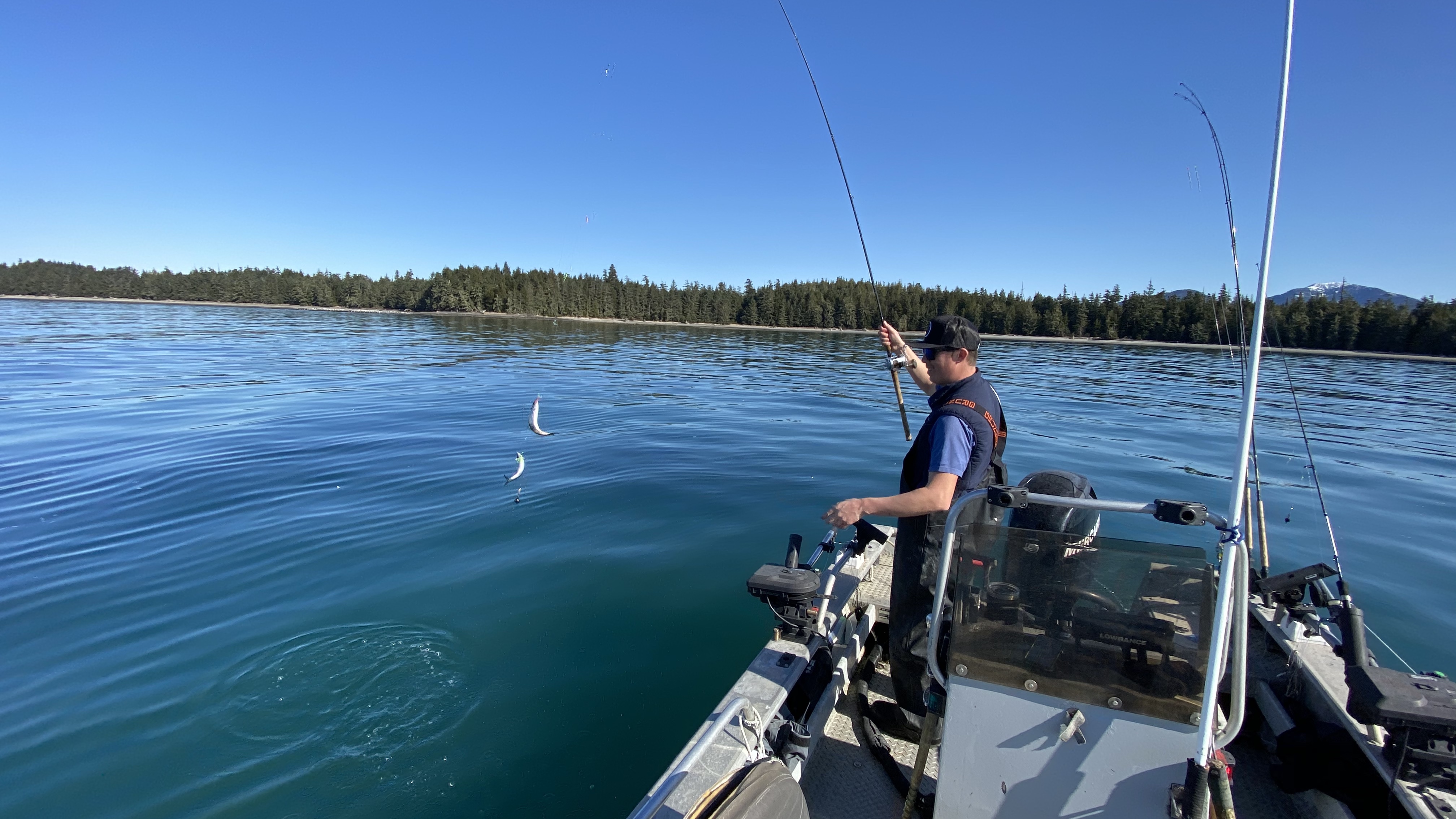
When the fishermen go to harvest la̱xsmxs’waanx [la̱x/sm/*xs’waa/nx], they will put a whole hemlock tree (or several trees) down for the herring to spawn on. Then after letting it soak, they’ll pull up the entire tree(s) covered in s’waanx. From time to time, the hemlock trees can leave a slight pine-y flavour on the eggs, but for the most part it doesn’t effect the flavour too much.
My personal favourite is gyoos – this is what I grew up eating with my mom. The gyoos comes on large flat pieces of kelp. It’s easy to chop up, use in other dishes like a stir fry, and you can eat it quickly lol. Steve believes the gyoos can have a slight bitter flavour (because you can eat the kelp with the eggs), but I think it’s mild and I don’t mind it. Stephen’s favourite way to eat herrings eggs is legi. I have not eaten much legi, so I’m not very used to it, but it tastes just as good as any!
Legi is harvested by pulling the algae off the rocks at low tide, in the intertidal zone. Steve has harvested legi before, but we have yet to harvest this together. For legi, you can prepare the eggs the same way as described below (a pot of hot water, grease and of course, China Lily!).
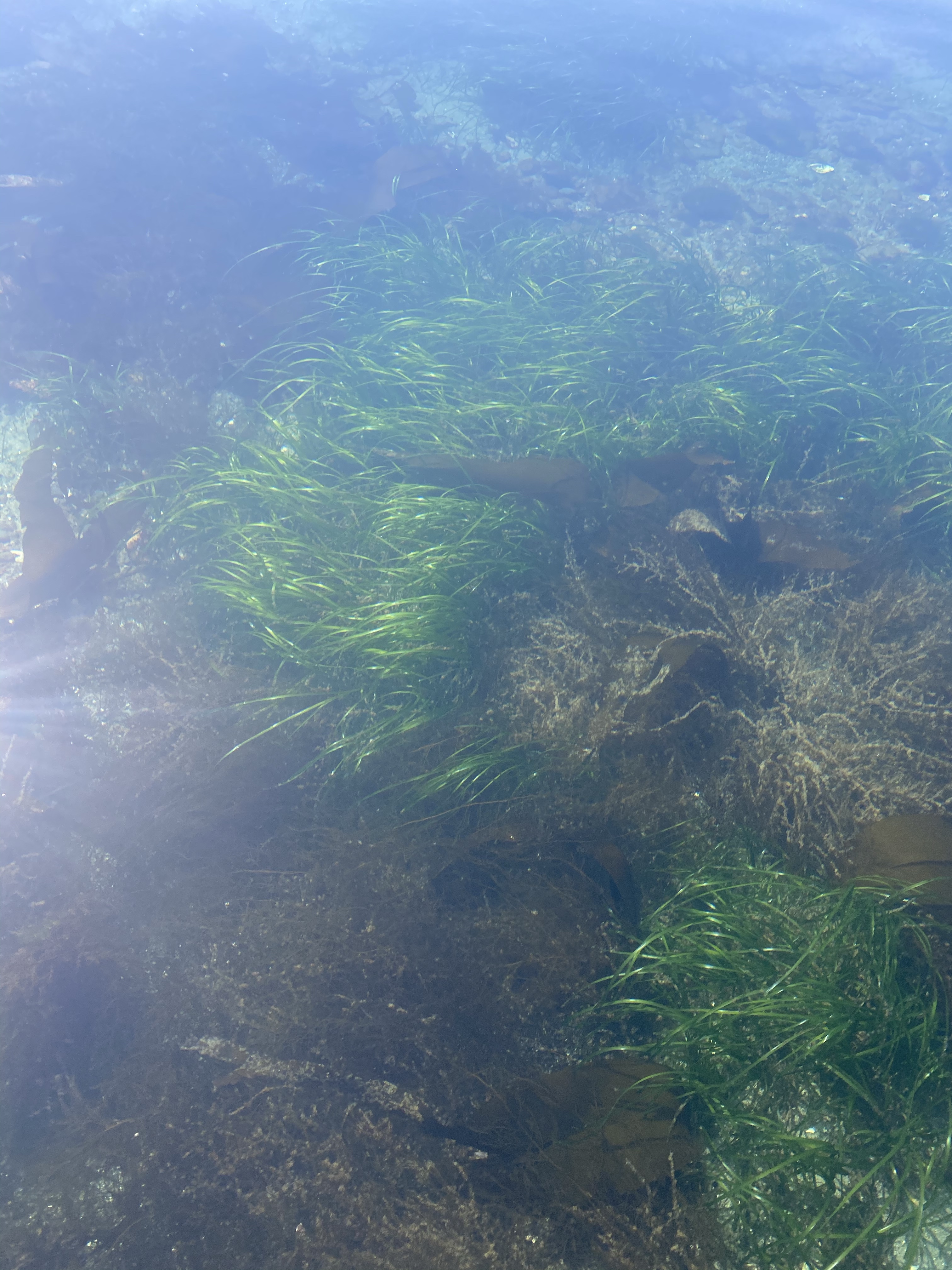
This year we got a new feed of herring eggs called p’aatsa̱h, which is herring eggs on a short stranded algae/seaweed.

To cook any herring eggs, the goal is to just warm them up. If you cook them until they turn white, they can be quite chewy. Check out the photos below of the different types of s’waanx, and two different cooking methods!
La̱xsmxs’waanx – herring eggs on hemlock branches
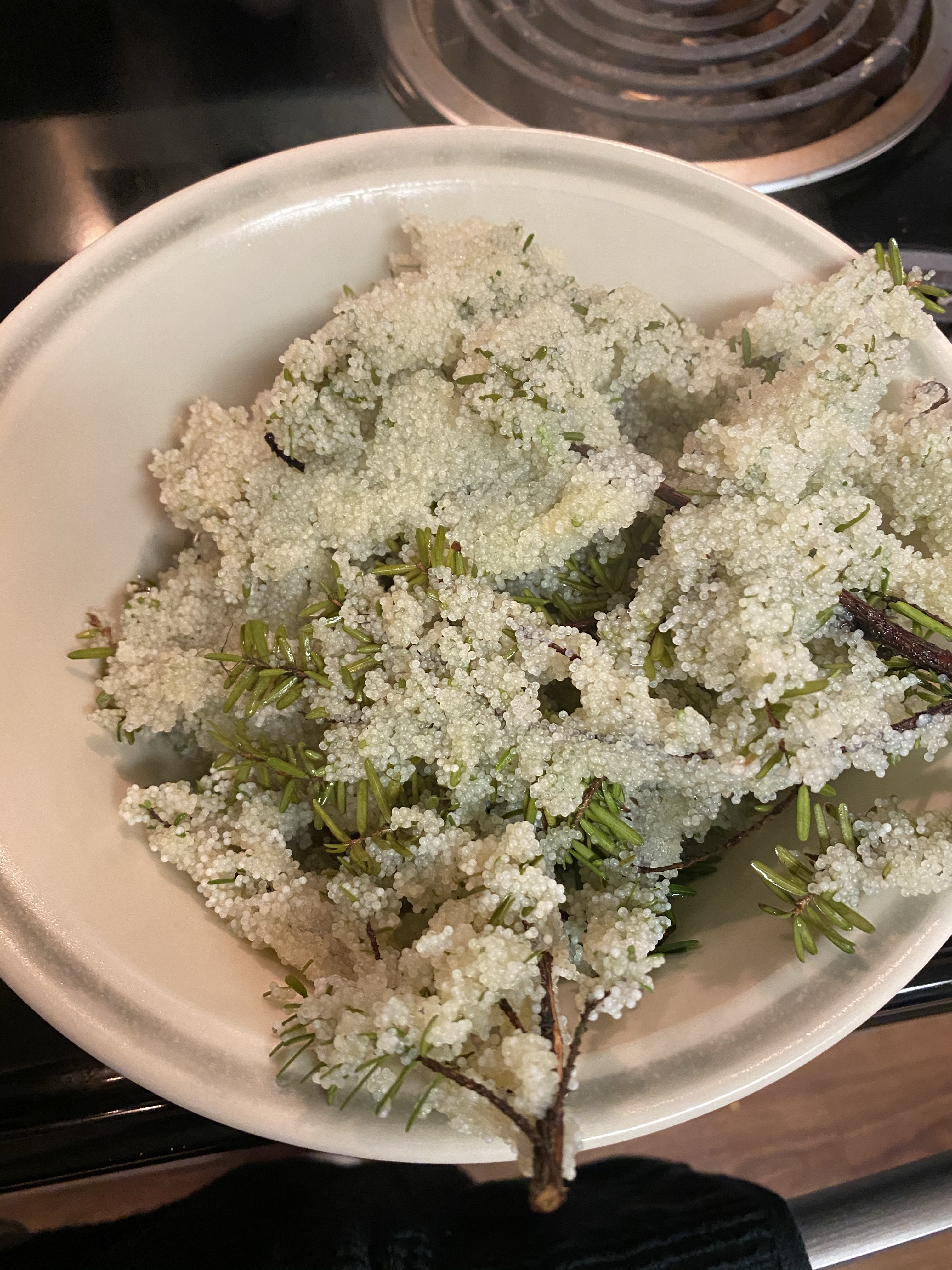
We prepared these la̱xsmxs’waanx using the most common cooking method in laxyuubm Ts’msyen (Tsimshian territory) :
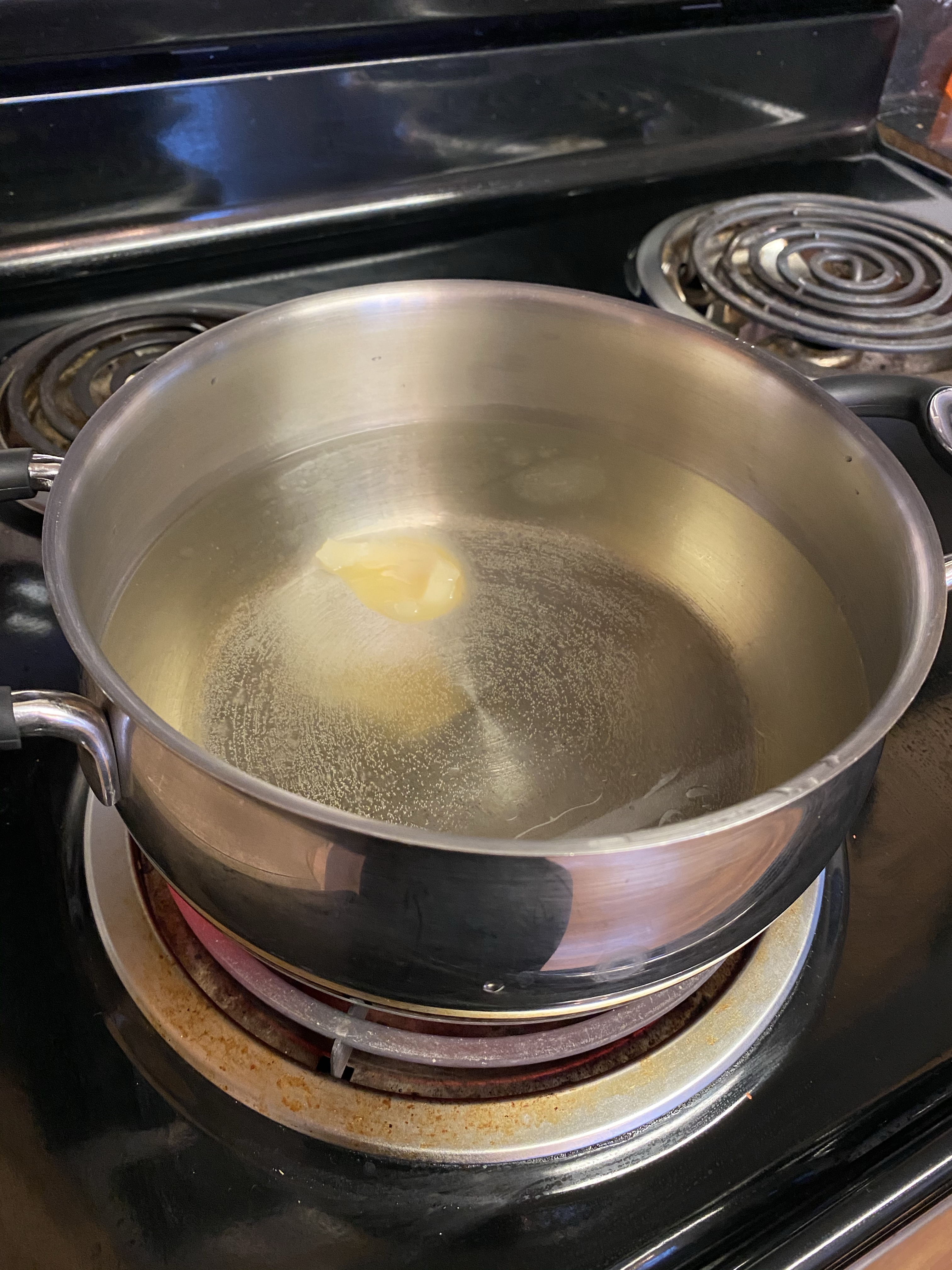
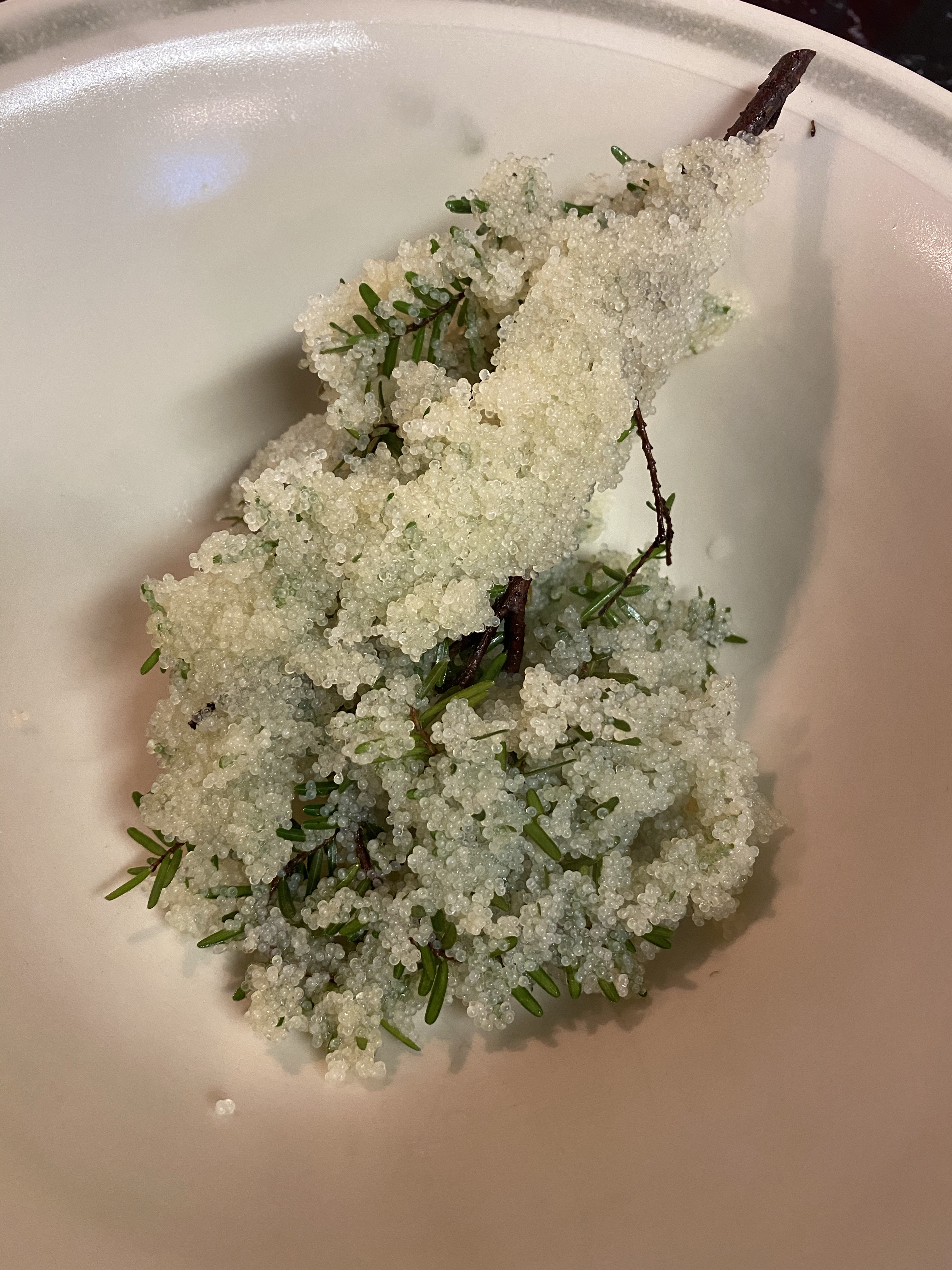
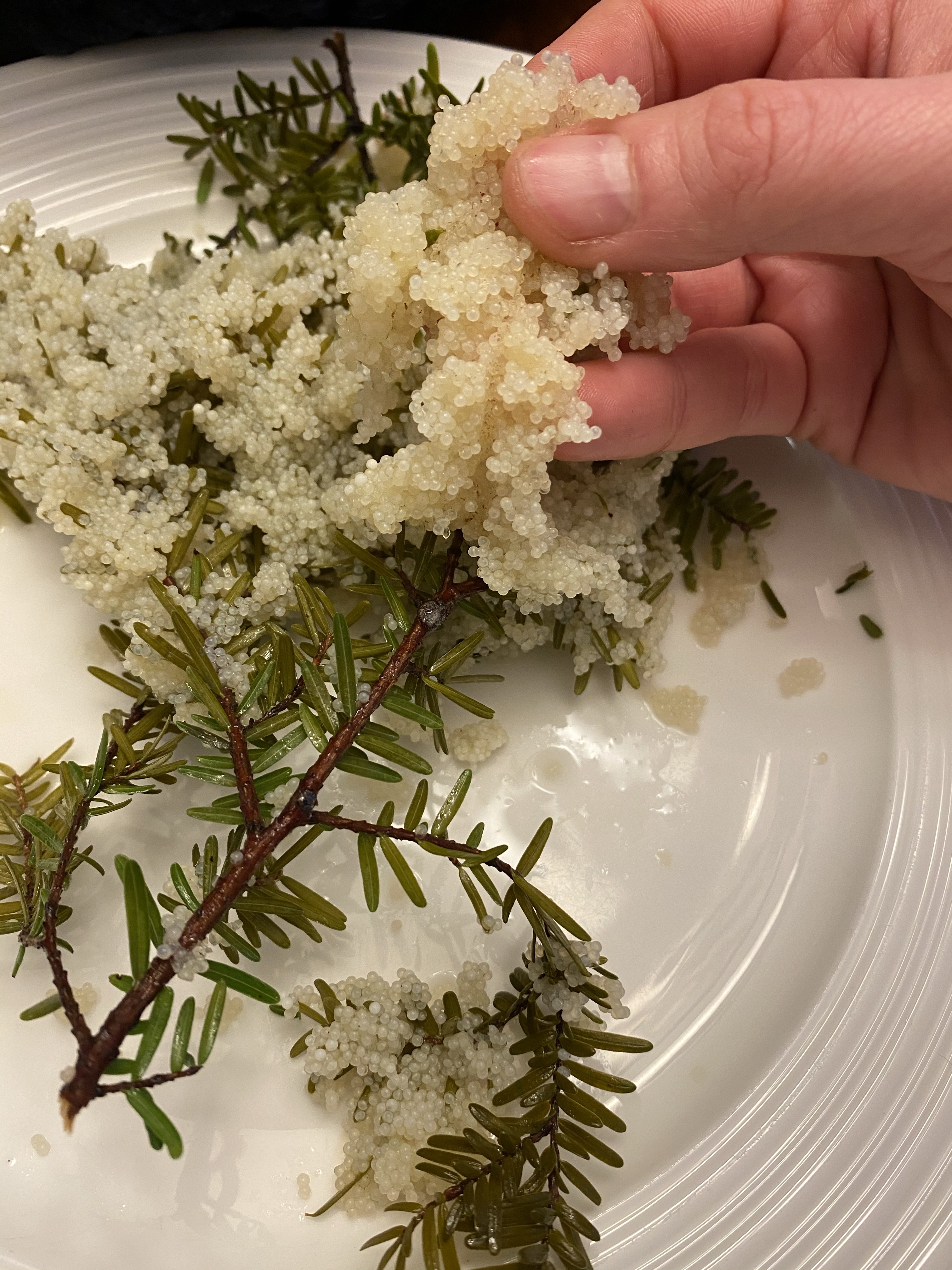
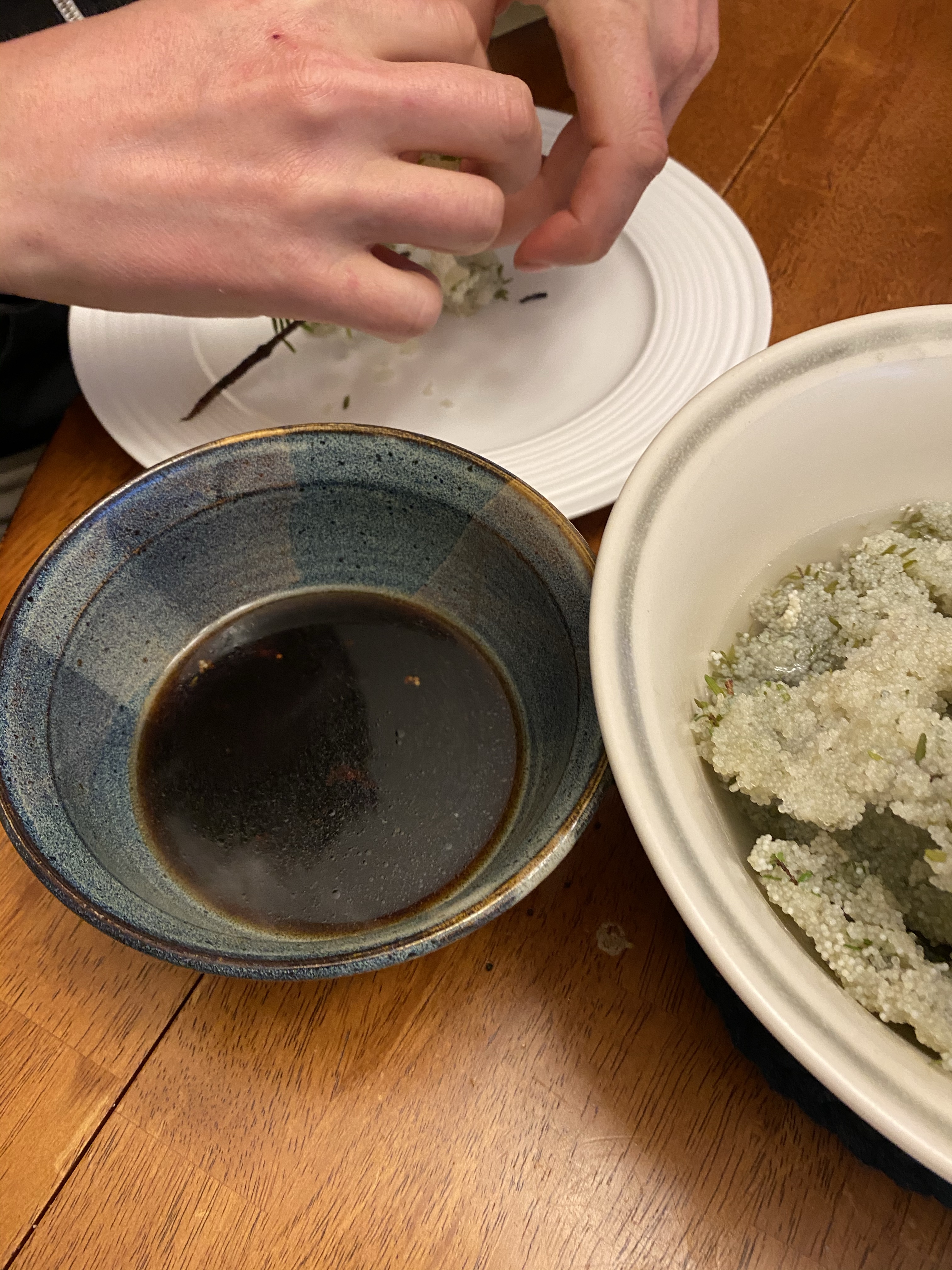
Gyoos – herring eggs on kelp
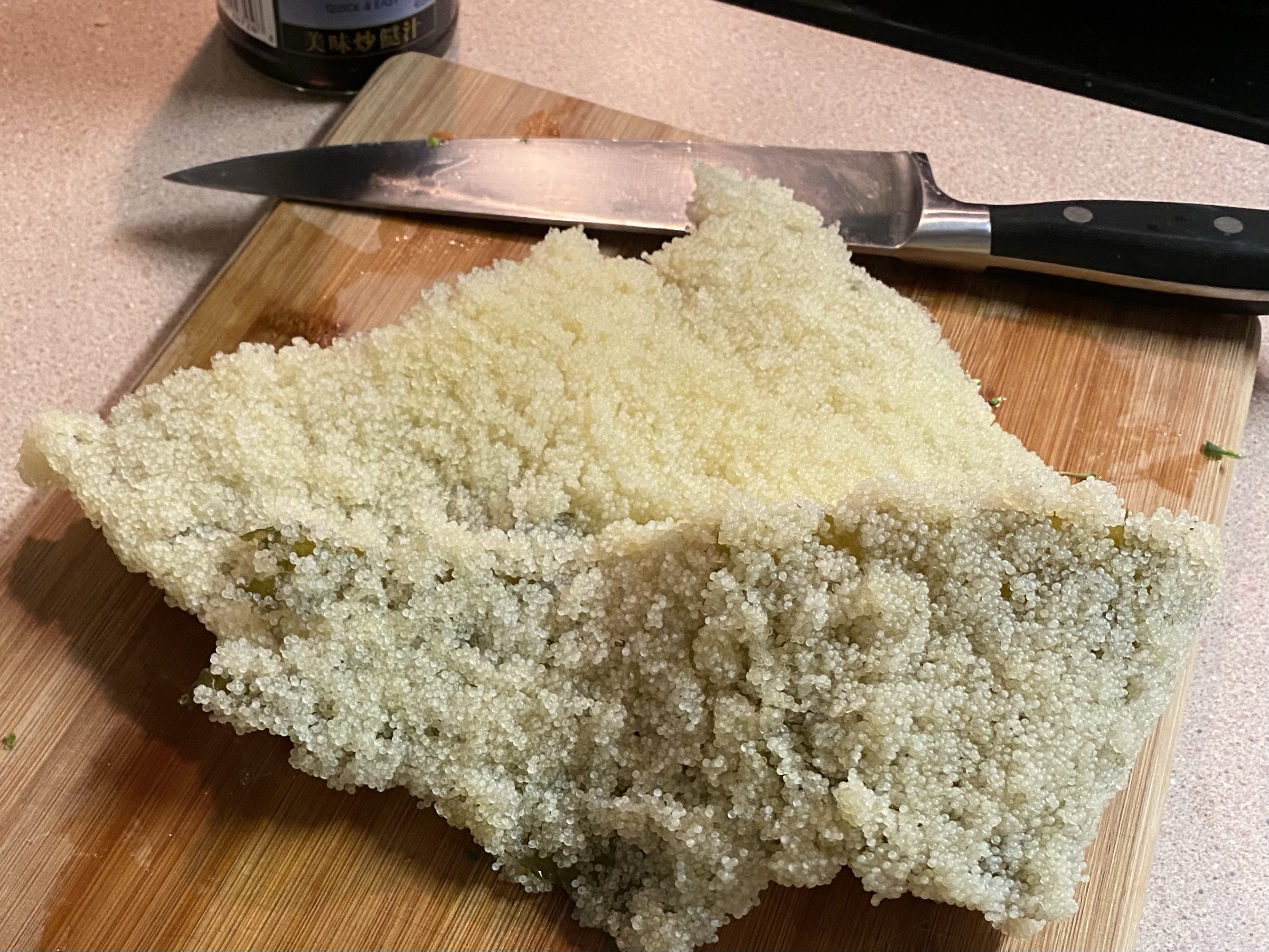
Herring egg stir fry
1. Make a stir fry as you normally would. In a large wok, I fried diced green pepper, asparagus, broccoli, celery, grated carrot, minced garlic and minced ginger in coconut oil. I then added a dash of fish sauce, chilli paste, China Lily soya sauce and stir fry sauce (I would have added black bean sauce but we were all out). This is also really good with bacon, but I forgot to cook it with bacon! 😩
2. Once the vegetables were half cooked, I added in diced gyoos. Where it was easy to separate the kelp from the herring eggs, I removed the kelp. This helped to cook the herring eggs more evenly, as the eggs were quite thick. I let the gyoos sit on top of the veggies for 5 minutes with the lid on, then gave the eggs a quick stir every few minutes to prevent them from over cooking (I also added extra China Lily directly to the eggs for more flavour).
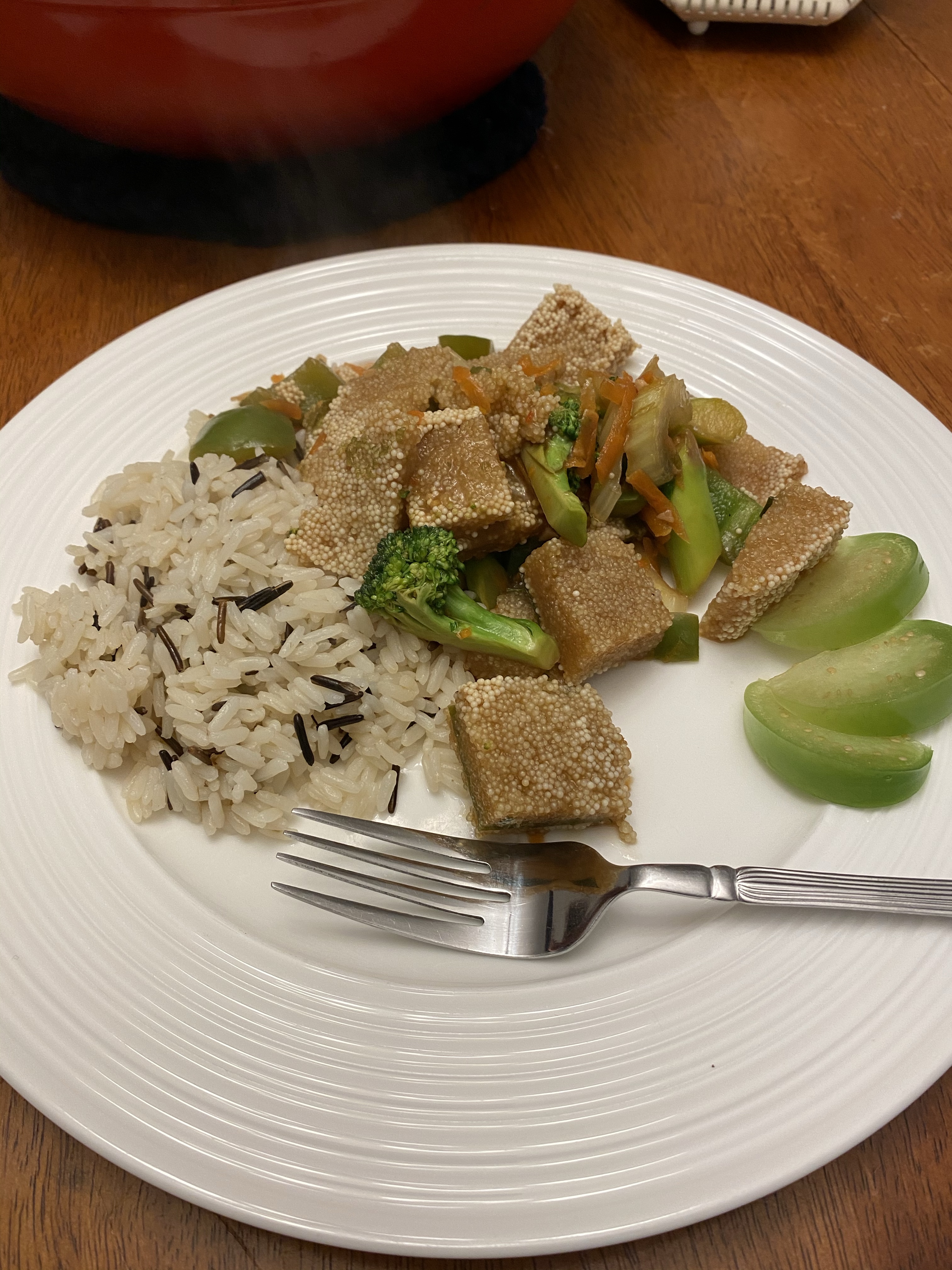
P’aatsa̱h – herring eggs on short stranded algae/seaweed
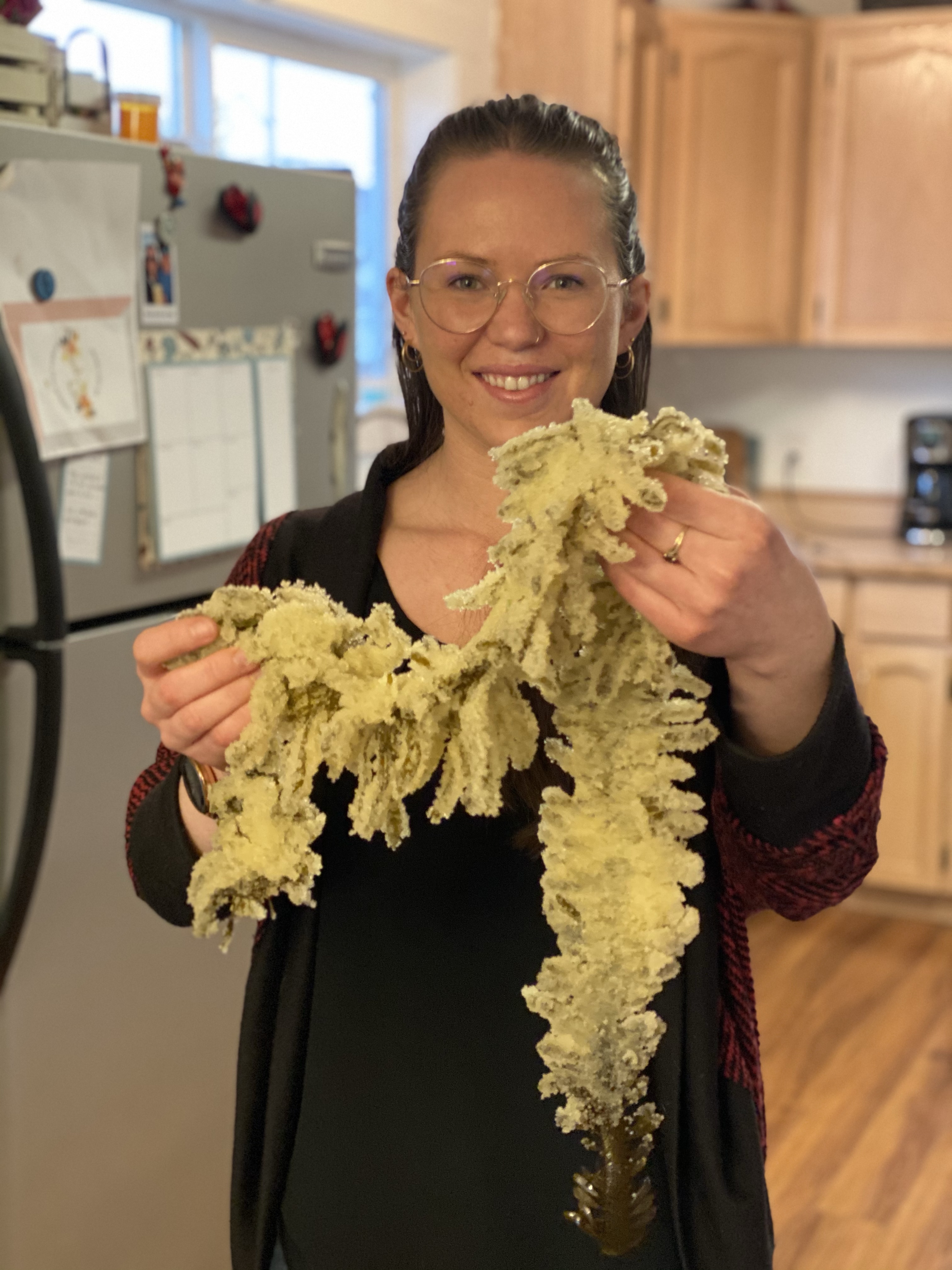
This year, we were fortunate to receive p’aatsa̱h, a less commonly harvested form of s’waanx (we originally thought this was a form of legi, but Mr. Campbell clarified the more specific name for it).
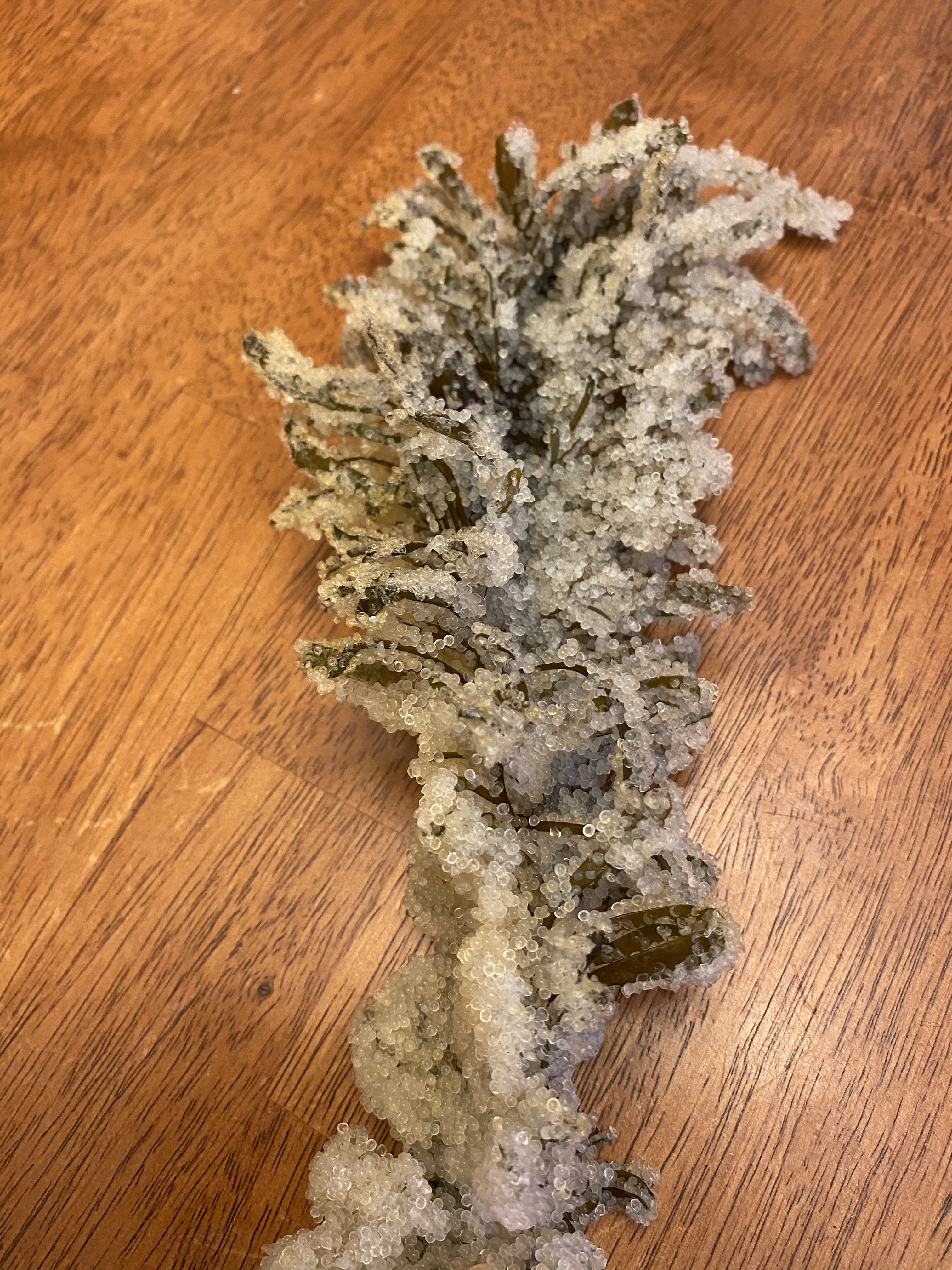
I’m grateful to have Mr. Campbell’s help to clarify vocabulary for our blog – because it is sometimes hard to find information on traditional foods in the literature. When in doubt, ask your parents or an elder! T’oyaxsut nüün Mr. Campbell, and t’oyaxsut ‘nüün for providing the audio pronunciation for this blog post!
Follow güüdisk on Instagram for more harvesting photos, including additional info on harvesting s’waanx!
Hope we all get to spend time with our loved ones soon!
S&L – April 9, 2021
Wow, Lisa and Steven you two are amazing. My hope is the younger generation picks up on your blogs so they can experience the seasonal foods. I am grateful that i am able to eat all our traditional foods. I love it.